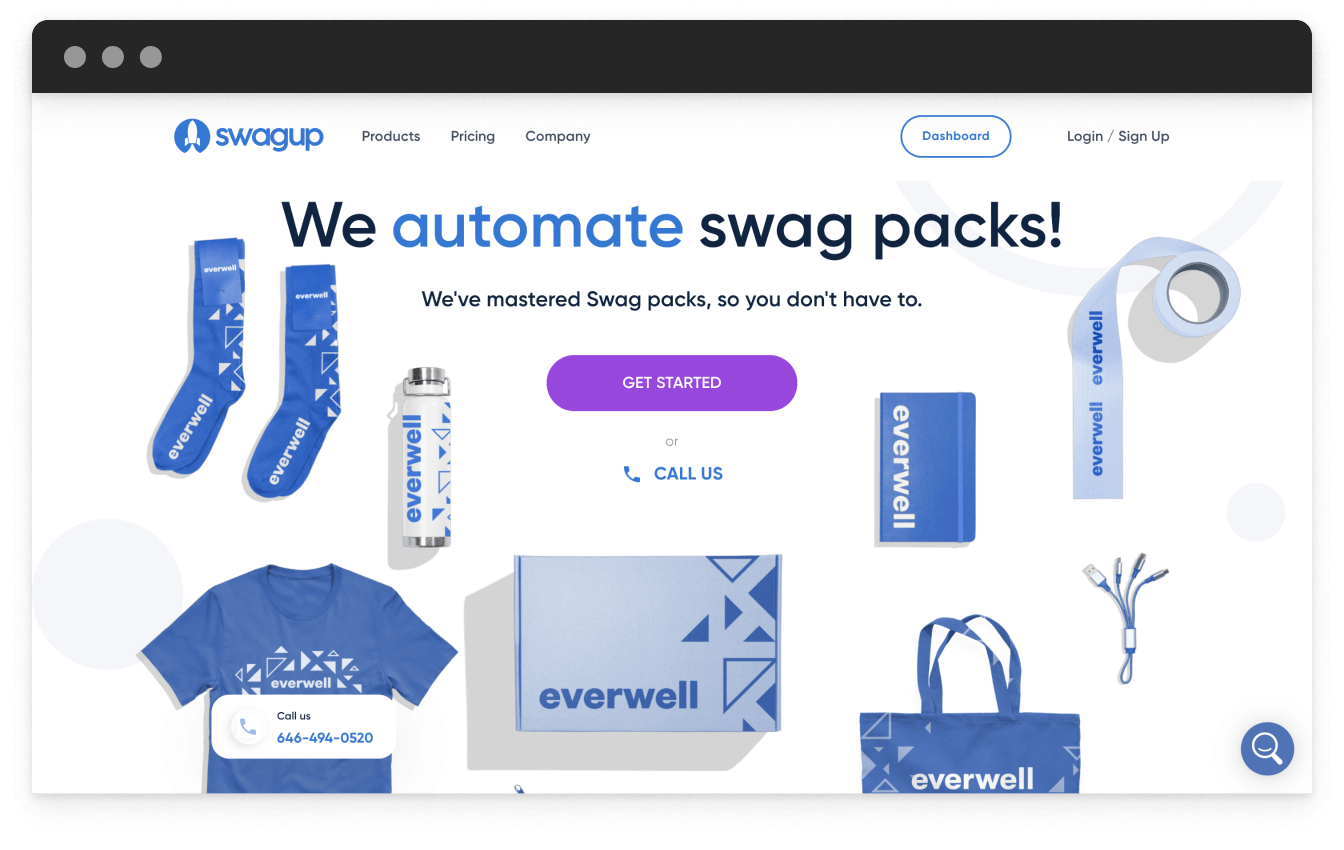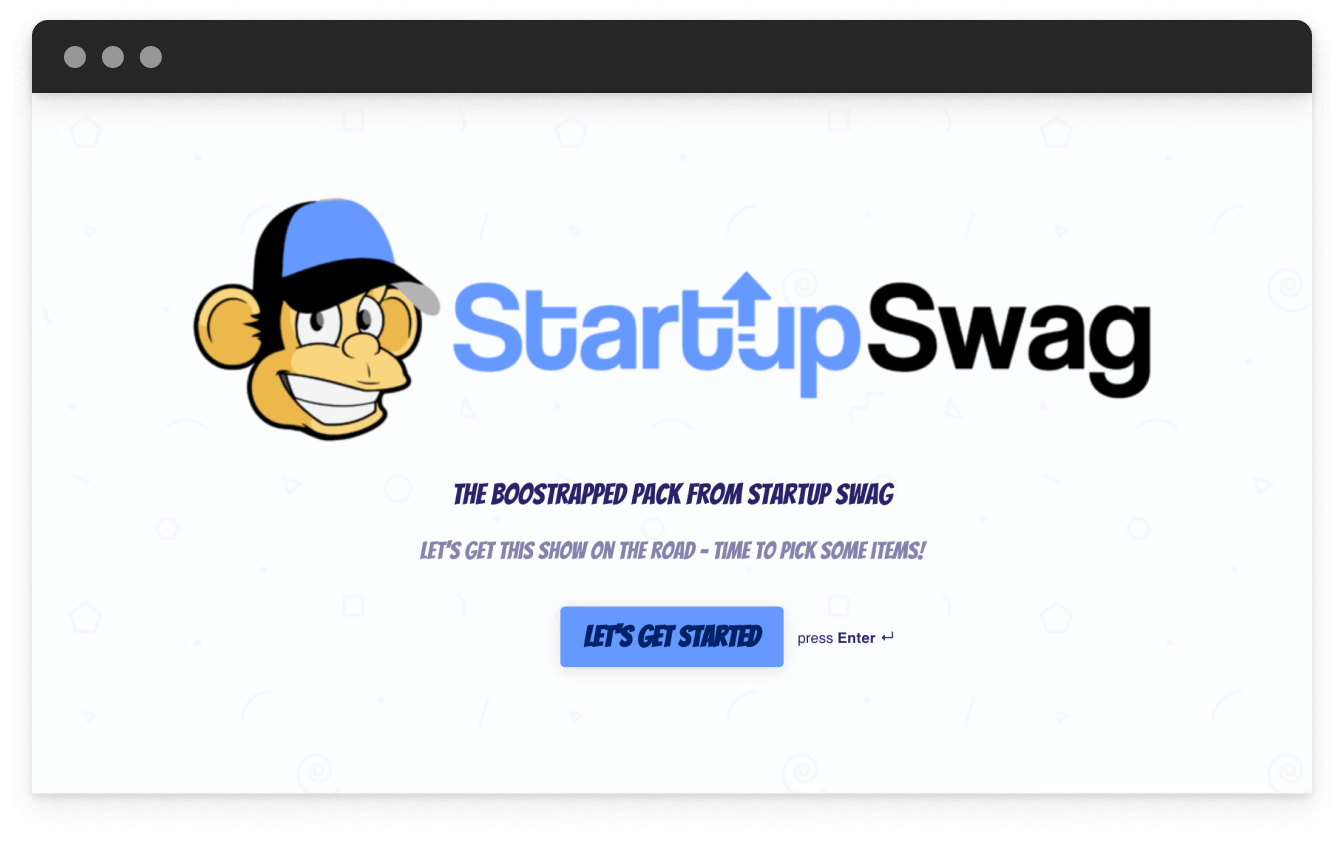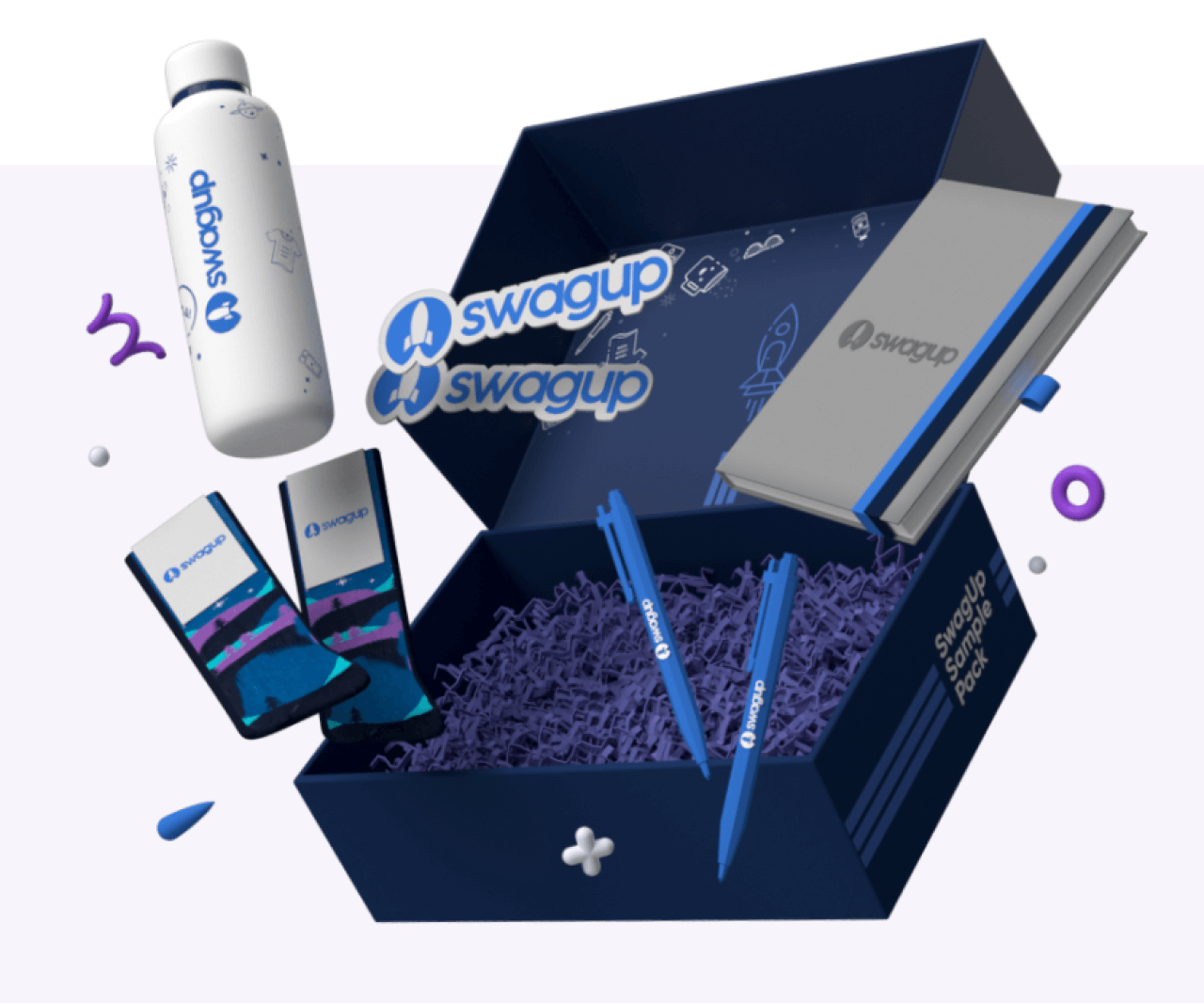Customer
How to make $10 million with water bottles, socks, and a typeform
Find out how a determined young entrepreneur went from selling his mom's groceries to building a swag empire—and meet the no-code tools that got him there.

Michael Martocci was born to be an entrepreneur. While most kids were at home with Spongebob or Pokémon, Michael was out hustling.
His career followed an unconventional trajectory:
- At the age of five he was out selling his mom' s groceries to kids on his street in New Jersey.
- As a student he launched a finance app with a buddy and promoted it to kids on campus.
- As a young adult, he dropped out of school to partner with an NFL player running fitness training programs.
But it was mouse pads, water bottles, and socks that eventually made Michael his fortune—at the grand old age of 24—through his booming business, SwagUp.
Selling swag with a swagger
Michael' s early forays into business opened his eyes to how crucial company culture and brand are for today' s startups—where competition for talent is rife. And he strongly believed company-branded swag could play a key part in recruitment and employee retention.
Michael decided to try and ruffle up the traditional promotional goods market and launch a swag service for the modern company.
But how to start? Michael had some experience with screen printing promotional products back when he was peddling custom flags from China at school (sorry, forgot to mention he did that, too).
Problem: he wasn' t a coder and didn' t have the tech knowledge needed to build a seamless swag ordering flow from scratch.
Testing an MVP
As it turned out for Michael, the answer to his question lay in three core products: Wix, Trello, and Typeform.
- He used Wix to build a website " because it was so flexible and easy to use."
- He adopted Trello to manage orders on the back end because " it was so visual and easy to use off the bat."
- He turned to Typeform, a product he' d used before, to collect enquiries from people who were interested in ordering swag.
This was the original typeform that Michael embedded on his Wix site. He later polished it up and integrated it with Trello to manage all the swag requests.
" Now we use Typeform for many things," said Michael (more examples below). " But in the beginning it was like our core lead generator. It was a way for companies to tell us what swag they were interested in."
He continued: " It later evolved to be more like a pack builder once we decided to focus on selling packs of swag. So Typeform was basically the product."
Focusing on value
" Immediately we could see that startups were looking for a swag service that was more simple and interesting to use," said Michael.
So Michael quit his regular day job and rented a WeWork office space in New York to run his new swag venture. But it was tough at first.
" For the first few months we were doing about $3,000 a month. But we were running out of money."
Then it all changed. One company asked them to put together welcome kits for their new employees. It was a $10,000 order.
More importantly, it opened Michael' s eyes to a need in the market. He realized companies were finding it hard to put packs of swag together by themselves. So he decided to focus his business and his messaging around putting together these packs for companies.
In that first year, SwagUp turned over $3.3 million. Two years on, and the company is close to hitting $10 million in revenue with more than 30 employees on board.
How SwagUp uses Typeform
As the company has scaled, Michael has continued to entrust Typeform to capture information across all manner of different " beautiful experiences."
In his words: " We have 43 different typeforms running now for different things, from job applications and redeem pages to sample pack builders."
His words, not ours. And here' s five more typeforms that have helped to grow SwagUp:
1. Proving the concept
The first iteration of SwagUp, known as Startup Swag, used a typeform to test the waters of what startups wanted. It was initially designed around a tiering system where companies could order swag at differing levels of quality, depending on their budget.
The typeform was embedded on a Wix website and orders would be thrown into Trello to be processed. After customers requested what they wanted through the typeform, Michael got back to them with a swag pack proposal.
2. The $5 million typeform
After receiving more than 2,000 responses to the first typeform, Michael created a more refined and integrated version, SwagUp 1.0. The process looked a bit like this:
- The typeform used Logic Jumps to funnel people to item selections based on what type of swag they wanted.
- People could then upload their logo via a File Upload question, set their budget, and give their contact details.
- This data would then be sent to Trello via Zapier' s automated workflows (called ' Zaps) to fulfil.
- From here the designer would pick up the task, create mockups of the items requested, and send to the customer.
3. Handling job applications
Michael continued to use Typeform for different things as the business grew. This included hiring new talent.
This job application form uses Logic Jumps to filter applicants to the role they' re interested in. Uploaded resumes are automatically sent straight to a Google Sheet and trigger an alert in Slack.
4. Fulfilling sample pack orders
For potential customers who want to get a feel for swag, the SwagUp team created a typeform, which is embedded on their sample packs request page.
Here' s how it works:
- Customers select their location using Multiple Choice options.
- A Logic Jump sends international customers to a Payment question where they are charged a $25 shipping fee.
- A Zap is used to send the information from the typeform to their fulfilment system. When orders come in and they can just print the shipping label right away and get the samples sent out.
5. Getting feedback on swag packs
SwagUp wanted to validate the impact of swag on a new employee' s feelings towards the company. So they created this typeform for new Nasdaq employees to complete after they got their swag. The typeform is triggered via a Zapier integration to get sent after a given period of time.
Next steps
So where do you go from here?
- Check out our template gallery for more cool use case examples.
- Visit this Help Center article for a deeper look at how SwagUp built the typeform that brought them $5 million in sales.
- Register to watch Michael talk in depth about how he' s built his business using Typeform and Zapier in our webinar.






